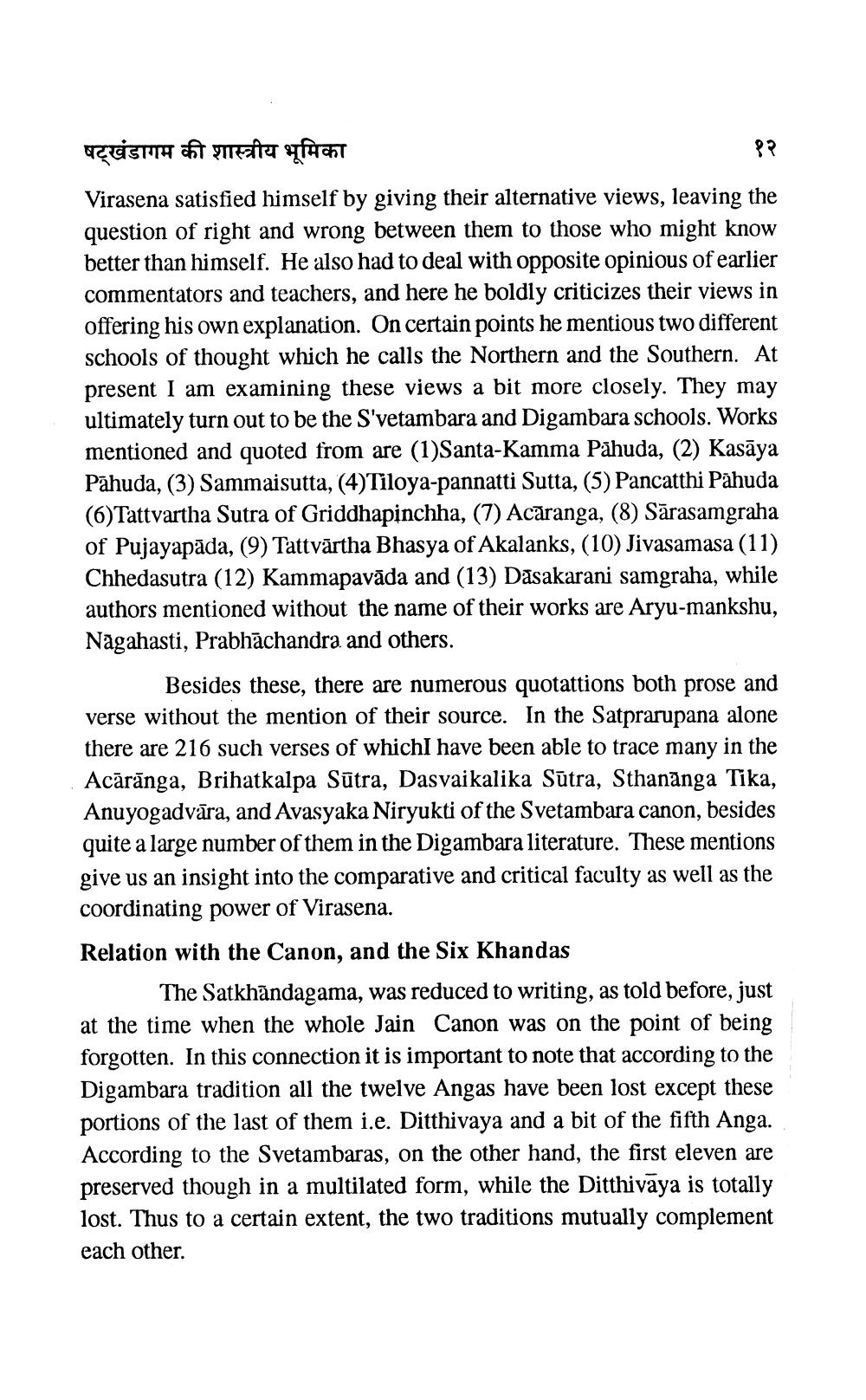________________
षट्खंडागम की शास्त्रीय भूमिका
१२
Virasena satisfied himself by giving their alternative views, leaving the question of right and wrong between them to those who might know better than himself. He also had to deal with opposite opinious of earlier commentators and teachers, and here he boldly criticizes their views in offering his own explanation. On certain points he mentious two different schools of thought which he calls the Northern and the Southern. At present I am examining these views a bit more closely. They may ultimately turn out to be the S'vetambara and Digambara schools. Works mentioned and quoted from are (1)Santa-Kamma Pāhuda, (2) Kasāya Pāhuda, (3) Sammaisutta, (4)Tiloya-pannatti Sutta, (5) Pancatthi Pahuda (6) Tattvartha Sutra of Griddhapinchha, (7) Acaranga, (8) Sārasamgraha of Pujayapada, (9) Tattvärtha Bhasya of Akalanks, (10) Jivasamasa (11) Chhedasutra (12) Kammapavāda and (13) Dasakarani samgraha, while authors mentioned without the name of their works are Aryu-mankshu, Nagahasti, Prabhachandra and others.
Besides these, there are numerous quotattions both prose and verse without the mention of their source. In the Satprarupana alone there are 216 such verses of whichl have been able to trace many in the Acaranga, Brihatkalpa Sutra, Dasvaikalika Sutra, Sthananga Tika, Anuyogadvāra, and Avasyaka Niryukti of the Svetambara canon, besides quite a large number of them in the Digambara literature. These mentions give us an insight into the comparative and critical faculty as well as the coordinating power of Virasena.
Relation with the Canon, and the Six Khandas
The Satkhandagama, was reduced to writing, as told before, just at the time when the whole Jain Canon was on the point of being forgotten. In this connection it is important to note that according to the Digambara tradition all the twelve Angas have been lost except these portions of the last of them i.e. Ditthivaya and a bit of the fifth Anga. According to the Svetambaras, on the other hand, the first eleven are preserved though in a multilated form, while the Ditthivaya is totally lost. Thus to a certain extent, the two traditions mutually complement each other.




